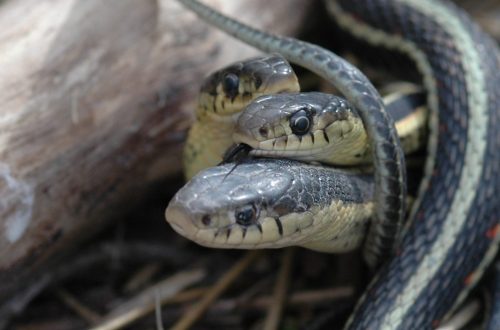Introduction: In a peculiar and perplexing turn of events, a three-headed snake has been encountered in the wilds of southern India, sparking confusion among both scientific circles and local inhabitants. This extraordinary phenomenon has left experts pondering over its origins, attempting to unravel the mysteries behind this unusual occurrence.

The Unique Encounter: Found by a resident in a village within the state of Karnataka, India, this unprecedented serpent with three heads has captured global attention, being hailed by many experts as a natural wonder. Images of this exceptional creature have swiftly gone viral across social media platforms, igniting fervent discussions among animal enthusiasts and researchers alike. The three-headed snake is attributed to a rare genetic mutation known as “tricephaly,” where an animal develops three heads instead of the conventional one. Such mutations are exceptionally rare, manifesting in only a fraction of a percent of births. Tricephalic snakes, while known to exist, typically struggle to survive in the wild due to difficulties in movement and prey capture.
Unraveling the Enigma: The discovery of this three-headed snake has incited a whirlwind of inquiries and debates among the scientific community, each striving to demystify the roots of this extraordinary occurrence. While some experts lean towards genetic mutations as the cause, others postulate environmental factors such as pollution, radiation, or exposure to specific chemicals as potential triggers.

A Rare Phenomenon Across Species: Although tricephalic anomalies have been observed across various species including cows, turtles, and even cats, the appearance of a three-headed snake continues to stand as a remarkable and puzzling event. This phenomenon has captivated and bewildered many, offering a glimpse into the extraordinary complexity of nature.
A Call for Caution and Respect: While the three-headed snake presents itself as a fascinating creature, it’s essential to remember that it remains a wild animal deserving of caution and respect. Preserving its natural habitat and refraining from interfering with its way of life is of paramount importance to ensure the creature’s well-being and conservation.
Conclusion: The appearance of a three-headed snake in the wilds of southern India has stirred an unprecedented combination of astonishment and curiosity. As scientists continue to explore the root causes of this anomaly, it serves as a reminder of the intricate and captivating intricacies found within the realm of nature.
